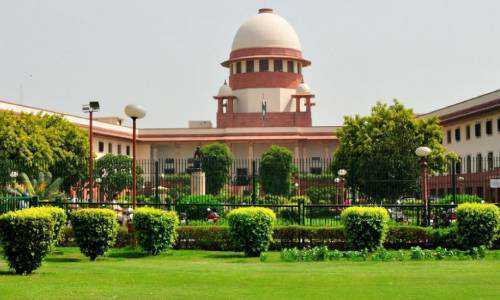
In Manish Kumar and others vs. Union of India, the Supreme Court of India ruled against a group of real-estate project allottees who had challenged the revisions to the Insolvency and Bankruptcy Code (Amendment) Act 2020. The petitions questioned the constitutionality of modifications to Section 7(1) of the Insolvency and Bankruptcy Code of 2016, among other things. Section 7(1) was amended to include a proviso that allottees under a real estate project (financial creditors) desiring to initiate the insolvency resolution process under the Code must file an application jointly with at least one hundred other allottees under the same real estate project, or 10% of the total number of allottees under the same real estate project.
In the instant case titled Manish Kumar vs. Union of India, the issue raised before the Supreme Court is:
Whether the amendments to Section 7(1) of the Insolvency and Bankruptcy Code, 2016 are constitutionally valid or not?
With regard to this issue, The Bench, which included Justices R.F. Nariman, N. Sinha, and K.M. Joseph stated that if there is a default against one applicant and the corporate insolvency resolution process of the corporate debtor fails, liquidation would begin, which is not the Code's goal. If a single allottee is permitted to file a Section 7 application, the interests of all other allottees could be jeopardised, putting the entire project at risk. Considering the arbitrariness and practicality of a minimum threshold of allottees suffering the same destiny under the same real estate project banding together to submit a Section 7 application, the Court determined that the 1st Amendment's aim is to promote the rule of law which is why it's not unconstitutional.
Moreover, The Supreme Court affirmed the amendment and dismissed the Petitioners' arguments. While the court acknowledged that the thirty-day term to comply with the minimum threshold criterion may have been fairer and lengthier, it was unable to conclude that the thirty-day time limit was impossible to meet. The imposition of a time restriction on pending applications cannot be characterised as arbitrary, because otherwise, the process would be unending and unknown. Furthermore, the proposed applicant's withdrawal, as required by the Code, will not prevent the invocation of the same default and re-filing of the application.
The court categorically held that:
“Amendment was likely to ensure was that the filing of the application was preceded by a consensus, or at least by a minuscule percentage of similarly placed creditors, that the time had come for undertaking a legal odyssey that was beset with perils for the applicants themselves, apart from others. It was further observed that the law had endowed the allottees with different remedies, having different implications, be it under the Consumer Protection Act or the Real Estate (Regulation and Development) Act. It was noted that it was not a case where the right of the allottee was completely taken away”.
In conclusion, the SC maintained the provisos on the grounds that they met the litmus test for being justified as reasonable classification established in furtherance of the Code's goals, and that the case was not one of incomprehensible differentiation.

